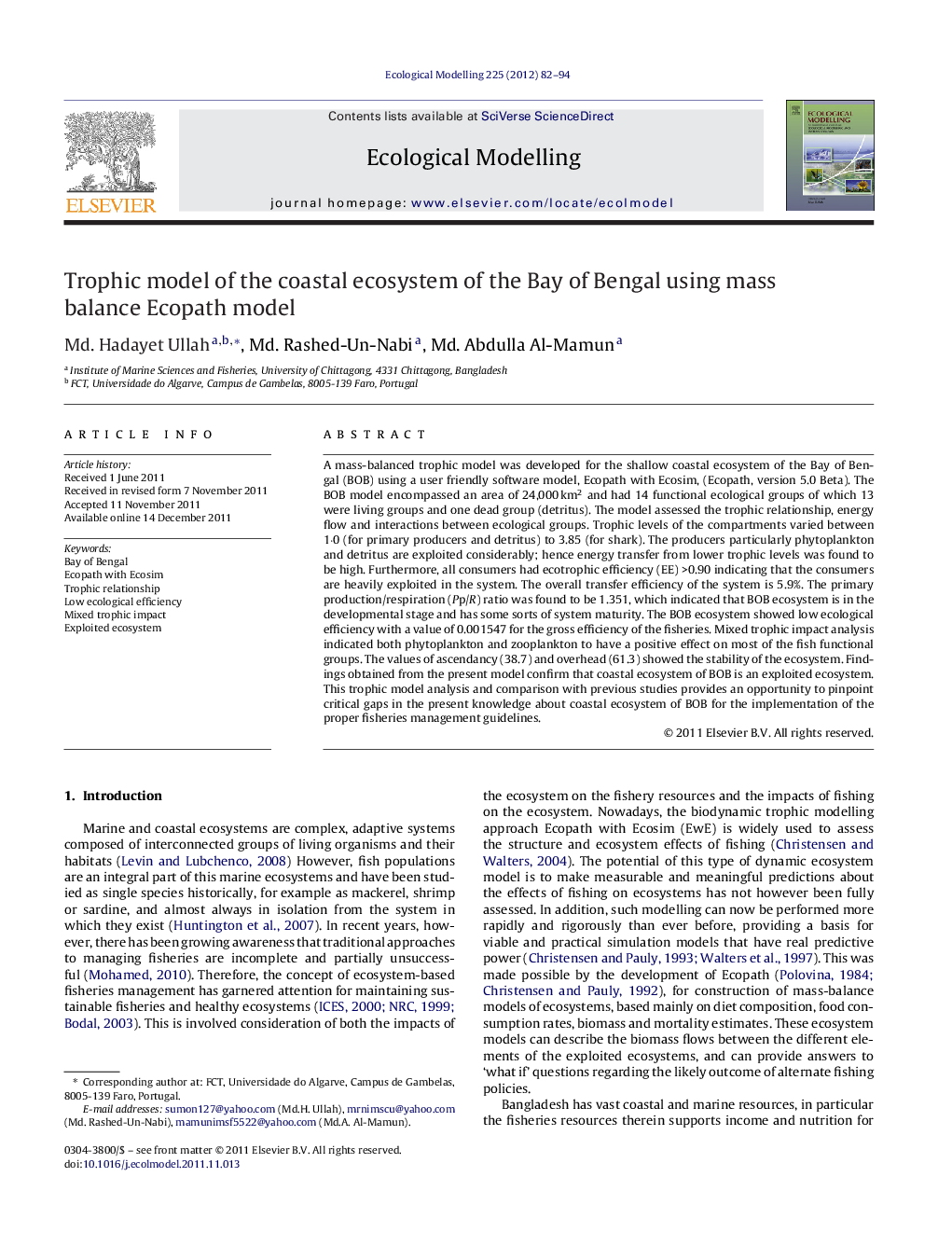| کد مقاله | کد نشریه | سال انتشار | مقاله انگلیسی | نسخه تمام متن |
|---|---|---|---|---|
| 4376602 | 1617518 | 2012 | 13 صفحه PDF | دانلود رایگان |

A mass-balanced trophic model was developed for the shallow coastal ecosystem of the Bay of Bengal (BOB) using a user friendly software model, Ecopath with Ecosim, (Ecopath, version 5.0 Beta). The BOB model encompassed an area of 24,000 km2 and had 14 functional ecological groups of which 13 were living groups and one dead group (detritus). The model assessed the trophic relationship, energy flow and interactions between ecological groups. Trophic levels of the compartments varied between 1·0 (for primary producers and detritus) to 3.85 (for shark). The producers particularly phytoplankton and detritus are exploited considerably; hence energy transfer from lower trophic levels was found to be high. Furthermore, all consumers had ecotrophic efficiency (EE) >0.90 indicating that the consumers are heavily exploited in the system. The overall transfer efficiency of the system is 5.9%. The primary production/respiration (Pp/R) ratio was found to be 1.351, which indicated that BOB ecosystem is in the developmental stage and has some sorts of system maturity. The BOB ecosystem showed low ecological efficiency with a value of 0.001547 for the gross efficiency of the fisheries. Mixed trophic impact analysis indicated both phytoplankton and zooplankton to have a positive effect on most of the fish functional groups. The values of ascendancy (38.7) and overhead (61.3) showed the stability of the ecosystem. Findings obtained from the present model confirm that coastal ecosystem of BOB is an exploited ecosystem. This trophic model analysis and comparison with previous studies provides an opportunity to pinpoint critical gaps in the present knowledge about coastal ecosystem of BOB for the implementation of the proper fisheries management guidelines.
► A trophic model of BOB has been constructed considering 14 ecological groups.
► Detritus was found to be major energy sources in the ecosystem.
► Zooplankton was found to be most important contributor in detritus biomass.
► The system is in developing stage with low level of ecological efficiency.
► The results showed that the ecosystem is heavily exploited.
Journal: Ecological Modelling - Volume 225, 24 January 2012, Pages 82–94